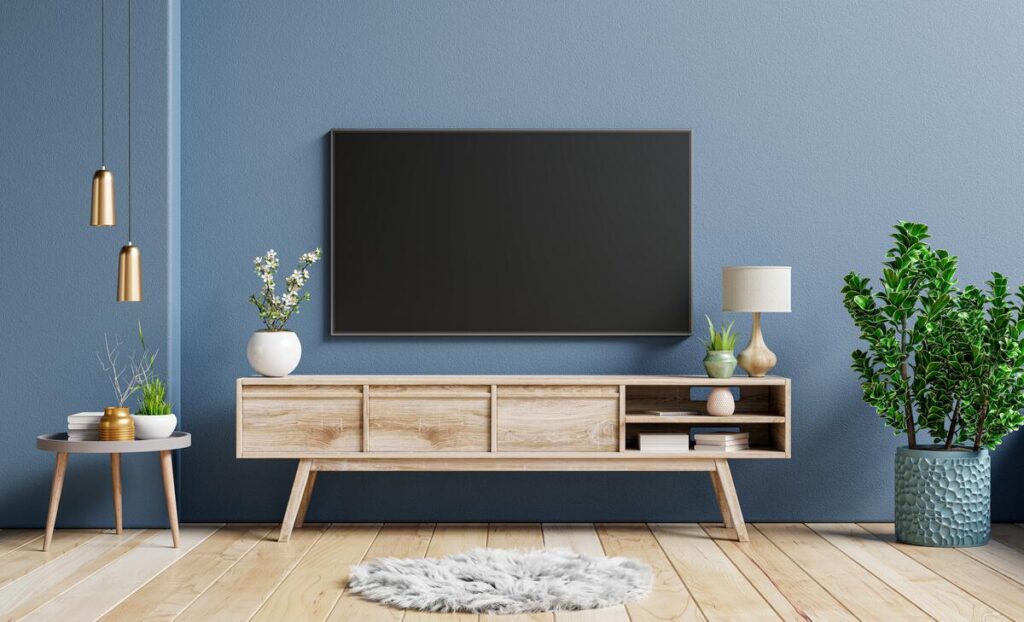Do OLED TVs Have HDR? (Explained For Beginners)
Disclosure: Tech Parasol is supported by its readers. When you purchase through links on our site, we may earn an affiliate commission. Thank you.
- All OLED TVs support HDR.
- The very best OLED TVs support multiple HDR formats.
- OLEDs lack brightness which is important for HDR, but make up for it in terms of contrast ratio.
OLED and HDR are two technologies that have massively improved picture quality on modern day Smart TVs.
HDR (High Dynamic Range) in particular is a fantastic technology that really brings a picture to life.
It does this by revealing more detail in the shadowy areas of an image and in the bright areas of the image.
The result is improved contrast within the picture and more accurate colors.
But is HDR a feature on OLED TVs?
Here’s whether OLED TVs have HDR:
OLED TVs do have HDR and support HDR10 as a minimum. The very best OLED TVs support multiple HDR formats including Dolby Vision and/or HDR10+. But OLED TVs aren’t as bright as LED TVs and some say OLEDs aren’t bright enough for HDR and fail to deliver the detail that HDR content demands.

Are all OLED TVs HDR?
All OLED TVs have HDR and the very best OLED TVs support HDR10+ and/or Dolby Vision in addition to HDR10 and HLG as standard.
Dolby Vision is one of the leading HDR formats and carries additional dynamic metadata that is added to the existing HDR data.
With the addition of this metadata, a Dolby Vision-capable TV is able to reproduce the content as accurately as possible, and is done on a frame-by-frame basis.
But some OLED TVs themselves do HDR better than others.
HDR demands that TVs have a high peak brightness and the more money you pay, generally the brighter the TV can get.
Is OLED better than HDR?
It’s not possible to say whether OLED is better than HDR, because the technologies do different things. So it’s like comparing apples with oranges.
OLED is a display technology that uses Organic Light Emitting Diodes to produce images on the TVs display.
HDR is all about brightness, but specifically variation in brightness.
It’s a technology that makes the OLEDs brighter in the parts of the picture that require it, like the sun’s reflection on a building for example.
HDR expands the range or the contrast between the brightest whites and the darkest blacks that the TV can produce. So you’ll see much better variation in terms of contrast.
The result is a picture that looks more realistic and has more detail in the shadows and brighter areas.
Colors are more lifelike and richer and you’ll see finer increments in shading
Basically, you get to see more of what is recorded.
Is HDR on OLED TVs better than HDR on LED TVs?
HDR is handled better by LED TVs than OLED TVs because LED TVs can get much brighter.
The LG G1 for example has a peak brightness of 870 nits whilst the Samsung QN90A outputs 1500 nits.
Most HDR content requires a TV to have a peak brightness of 1000 nits to display HDR content properly.
Although HDR requires a TV to be bright, it doesn’t mean that the entire screen will be lit up enough to blind you!
Instead, HDR will prompt the TV to be bright in certain areas which enables it to display subtle details in bright areas of the image.
But because OLEDs aren’t as bright as LED TVs, they can’t produce the detail in bright scenes that the best LED TVs can produce.
But what OLED TVs lack in terms of brightness, they do make up for in contrast.
OLED TVs have a so-called “infinite contrast ratio” because the pixels are individually lit and black literally means black because the pixels can be switched off.
LED TVs on the other hand don’t have such a high contrast ratio because the pixels aren’t individually lit (it’s an LED backlight).
They also suffer from blooming where light escapes the surrounding area of a brightly lit object in any given scene.
Does HDR improve the picture quality on OLED TVs?
HDR improves the picture quality on all TVs including OLED.
HDR makes the pictures look more realistic and natural by improving the contrast levels between the brightest whites and the darkest blacks.
HDR is also usually paired with Wide Color Gamut (WCG) allowing a much wider range of colors to reproduce the colors much more accurately.
The higher the Dynamic Range (DR in HDR) the closer the picture on the TV gets to different tones that your eye would see in real life.
Does HDR improve the brightness of OLED TVs?
HDR improves the brightness of the picture where required. But the technology can’t make the OLEDs themselves any brighter than what they are capable of.
To take full advantage of HDR, the TV needs to have a high peak brightness in the first instance.
The best OLED TVs can only reach a peak brightness of around 800 nits. LED TVs can get a lot brighter and are therefore better at displaying HDR content.
How does HDR work on OLED TVs?
HDR works the same way in all TVs including OLED TVs. It is all about reproducing on a screen whatever is captured by a camera, accurately.
In other words, it’s about reproducing what the human eye can see.
HDR works by increasing the dynamic range or the contrast ratio between the darkest portion and the lightest portion of any given scene.
This is achieved by combining a HDR capable TV together with HDR content and the right type of HDR too, otherwise HDR isn’t possible.
But when HDR is used throughout the workflow (from scene capture with a camera through to displaying on a HDR TV), HDR video has more luminance, better contrast and more accurate and vibrant colors.
Do OLED tvs support all HDR formats?
Not all OLED TVs support all the different HDR formats. Most OLED TVs TVs support HDR10 because it’s an open format and free to use.
But not all TVs support Dolby Vision, because the manufacturer has to pay a license fee to Dolby in order to use it.
But, according to users on the OLED subreddit, here’s a summary of the formats that are supported according to the manufacturer:
- Philips: DV and HDR10+
- LG: HDR10 and Dolby Vision, No support for HDR10+
- Sony: HDR10, Dolby Vision, IMAX Enhanced, No support for HDR10+
- Panasonic: HDR10, HDR10+ and DV
- Vizio: HDR10, HDR10+, DV, HLG
Does viewing HDR content risk panel burn-in and panel wear?
Although HDR causes the image to be brighter in certain parts, it is unlikely to cause panel burn-in, especially if the picture is moving.
Also, an Automatic Brightness Limiter (ABL) is also included with OLED screens to limit excessive brightness.
Static images are more of a concern and can cause image retention (short term ghosting) and more permanent or longer term burn-in.
So if you’re worried about burn-in, make sure you vary the content that you watch and the games you play on your TV and avoid displaying too much static content on the screen.
For example, if you leave CNN on your TV for several hours every day, you may notice some burn-in over time due to the logo etc.
Turning down the brightness or the “OLED light” can also help, but only really necessary if you’re watching a lot of static content or gaming.
But with newer OLED TVs this is becoming less of a concern due to inprovements in manufacturing processes and software compensation.
And according to CNET, many manufacturers have stated that burn-in, although possible, is not very likely with normal TV use.
Does HDR affect the lifespan of OLED TVs?
HDR requires OLEDs to be brighter in certain parts of the screen.
To increase the brightness of OLEDs, they require more current to flow through them.
And it is this increased current that can decrease their lifespan.
So increasing the brightness of the OLEDs can decrease the lifespan of the OLEDs themselves.
But OLED panels are designed to last for thousands of hours.
In fact several users on the OLED subreddit have reported using HDR for all their gaming for several years without experiencing burn-in or obvious wear and tear.
Sources
Dolby Vision HDR: everything you need to know
What is HDR for TVs, and why should you care?
OLED TVs aren’t always great for HDR – here’s why
OLED Screen Burn-In: How Worried Should You Be?
OLED screen burn-in: How to prevent it (and why you shouldn’t be worried)

Robert Anderson
Robert Anderson, the founder of Tech Parasol, had a keen interest in tech from a very young age. He studied Electronic Engineering at University and then went on to become a Software Developer. He launched Tech Parasol in 2021 to share his knowledge with the aim of making tech easier to understand for everyone.
